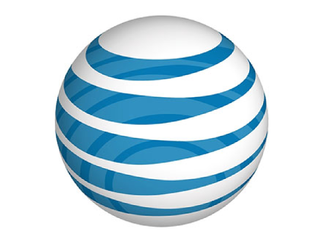AT&T ISP Review & Reader Survey Results
We asked readers to rate their Internet Service Provider based on price, performance, reliability and support. Here are the results for one of the country's oldest communications companies: AT&T.

Introduction
Last month, we reached out to our community, asking readers to tell us what they thought about their Internet service providers (ISPs) in a survey rating price, performance, reliability and customer service. We have the results, and it's time to reveal your ISP ratings with our Tom's Hardware ISP Review!
Our survey garnered over 3100 results, with 271 votes reviewing AT&T. We arrived at our scores by calculating an average from the total score for each individual ISP and category using a one- to five-star rating, rounding to the nearest ¼ star. However, we also provide the mathematical average of each ISP’s survey results, for the sake of comparison later. It may become a very close race to see which ISP provides the best service.
The first company we're looking at is a mainstay in the communications industry with more than 130 years in the business. That makes it older than any of the other companies we are reviewing. That impressive claim is true...technically. However, the AT&T we know today isn't the same organization now as it was more than a century ago.
History
The American Telephone and Telegraph Co. began as the Bell Patent Association, a legal entity created in 1874 with the goal of protecting the patent rights of the telephone system's inventor, Alexander Graham Bell. The company was formalized in 1877 and dubbed the Bell Telephone Co. Five years later, a project known as "AT&T Long Lines," the first of its kind, was commissioned to create a nationwide communication network with a viable cost structure. The project was incorporated into a new company in New York state in 1885.

AT&T developed and maintained a monopoly on phone services in the United States and Canada throughout most of the 20th century by buying up small communications companies and making a pact with the government to maintain that monopoly status legally. That's not the greatest (or fairest) way of doing business, and in 1984, the massive communications giant was broken up into seven regional companies, referred to as the "Baby Bells."
Between 1996 and 2006, a company called SBC Communications (which itself was originally Southwestern Bell Corp., one of the seven companies created from the break-up) acquired four of the seven regional Baby Bell companies, and reincorporated as AT&T Inc. in 2005.
When AT&T was considered a monopoly, the government had to step in and break it into seven companies. But rejoining five of them under a new name seems to be fine for now. The company thrives today, boasting an impressive 12.2 million "U-verse" high-speed Internet customers, warranting its spot in our review.
Stay on the Cutting Edge
Join the experts who read Tom's Hardware for the inside track on enthusiast PC tech news — and have for over 25 years. We'll send breaking news and in-depth reviews of CPUs, GPUs, AI, maker hardware and more straight to your inbox.
Technology
Although AT&T is starting to offer fiber-optic Internet service in some regions, it is not widely available yet, and the majority of AT&T's customer base (and our surveyed readers) seem to be using its affordable U-Verse DSL options, offering varying plans with speeds from 1.5 Mb/s to 45 Mb/s.
| Speeds (In Mb/s) | Prices (Per Month, Non Promotional) | Primary Service Regions | Technology |
|---|---|---|---|
| 1.5, 3, 6, 12, 18, 24, 45 | $25, $30, $35, $40, $45, $55, $65 | AL, AR, CA, FL, GA, IL, IN, KA, KE, NC, NV, OH, OK, SC, TN, TX, WS | DSL |
-
jasonelmore I wish you guys would do ratings for the Other 3 DSL companies like Windstream and CenturyLink..Reply
Those 2 companies are the absolute worst broadband companies in the world. All DSL plans in my area are restricted to 1 Mbps because of over selling, and no upgrades are planned to ever increase these speeds. -
Achoo22 I don't understand why the article states that it's impossible to measure downtime. My modem is pinged a couple of times a minute from multiple locations, all located on major backbones. This data, compiled, gives an excellent real-world representation of overall connection uptime and performance.Reply
Of course, it's overkill when first-hop pings exceed 300ms with 3% or more packet loss every night from 6PM to midnight or whenever demand goes up. The Windstream DSL service simply isn't engineered to support its users simultaneously. -
cohetedor Your pricing unbundled is way off on 6mbps DSL. I'm in MI and have to pay $57 a month. And Uverse starts as slow as 768k, I know because they tried to cut my regular DSL off last January and 768k was the fastest they could offer me.Reply -
Kridian Reply
Dear lord! My condolences.16986855 said:I'm in MI and have to pay $57 a month. And Uverse starts as slow as 768k, I know because they tried to cut my regular DSL off last January and 768k was the fastest they could offer me.
-
dorsai There is no better argument for municipal broadband projects in my opinion...these survey's make one thing clear...unless they are pushed by competition ISP's will not improve their service. Any speed below 15mbps in this day and age does not even qualify to be called "broadband". States should be pushing all of the companies offering anything below 15mbps speeds to upgrade their networks since they are suffering negative economic impacts by allowing the status quo...Reply -
10tacle I participated in this survey last month, so I'm glad to see the results. My two biggest complaints were outages (while relatively quick, still a PITA, especially when gaming online and recording on the DVR) and lower than what my speed should be that I'm paying for. The good news is that my city is one of the markets that will get ATT's gigabit fiber. I had Comcast in my previous home and while it was more expensive and the customer service was horrid, it was also faster for the same price tier and there were next to zero outages.Reply -
dstarr3 It's strange how this varies so wildly from my experience. I have had ZERO downtime in the past two years, I'm paying for 12mbps and I'm getting 15, and customer service has always been friendly and helpful. My bill went up after a year, and literally all I had to do was call and ask "Can you give me a discount?" and then my price went back down to normal. I'm very satisfied with U-Verse.Reply -
Achoo22 ReplyAll DSL plans in my area are restricted to 1 Mbps because of over selling, and no upgrades are planned to ever increase these speeds.
It's worse here. My neighbor, further from the DSLAM than I am, pays less for 6mb/s than I pay for 1mb/s and because his CO pin is hooked up to a less congested set of tspans than mine, his service is better. Meanwhile, I can't even get them to make a QOS filter setup so that my low-bandwidth, latency sensitive functions (eg, ssh and telnet to work) can function.
I won't even be able to load bandwidth-heavy webpages (like Amazon, which is about 3MB/24mb per load and will give 404 blank pages if any of the connections stall) to shop from home during Black Friday/Cyber Monday until after midnight. -
Teamchaos I had AT&T DSL 18Mb/s for a few years. I never got more than 10-12Mb/s. Eventually I switched to Charter and now I enjoy 100Mb/s bandwidth that consistently exceeds what I'm paying for (typically 102Mb/s). AT&T may be reliable, but it's sloooow. My house is near the end of their line in my neighborhood and I'm sure that was a factor, but still shouldn't have had to pay for more than I received.Reply -
ummduh I had the 45Mbps plan here in Napa, CA. I was usually able to get the rated speeds, but VERY often I could not stream anything more than 240 in youtube, and often Netflix wouldn't load in HD. Also, the pings were pretty bad, in the 60-90MS range. (speedtest.net tests) I'm talking literally every weekday after 3pm, and every weekend you couldn't use youtube. Netflix was more hit and miss.Reply
We ditched cable/tv service all together and switched to comcast 150Mbps service against my own will. Pings in the 10-16MS range (plus speedtests out to 18xMbps regularly), and haven't had any problems with youtube/netflix bufferings or loading in their highest resolutions and bitrates.
Most Popular


